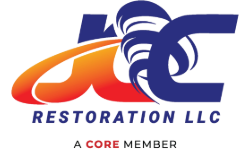When a disaster strikes, it’s important to know the basics of disaster cleanup. In Tennessee and Northern Alabama, that means understanding the basics of debris removal, mold remediation, and water damage restoration.
Debris Removal
After a disaster, the first step is to remove any debris that may be blocking roads or posing a safety hazard. This includes downed trees, power lines, and other large objects. In some cases, the local government will provide assistance with debris removal. However, in many cases, it’s up to the property owner to remove the debris.
Mold Remediation
Mold can pose a serious health hazard, so it’s important to remove it as soon as possible after a disaster. Mold remediation involves identifying and removing all mold growth, as well as repairing any water damage that may have caused the mold growth.
Water Damage Restoration
Water damage is one of the most common problems after a disaster. Water damage can cause mold growth, as well as damage to the structure of your home or business. Water damage restoration involves removing all water from the affected area, as well as repairing any damage that has been caused by the water.
If you’re facing a disaster, it’s important to understand the basics of disaster cleanup. By knowing the basics, you can ensure that your home or business is safe and clean after a disaster.
